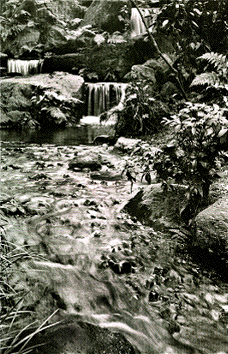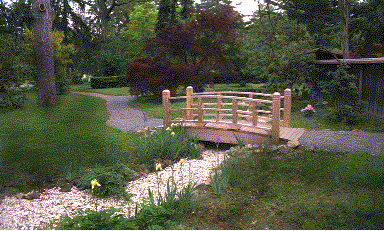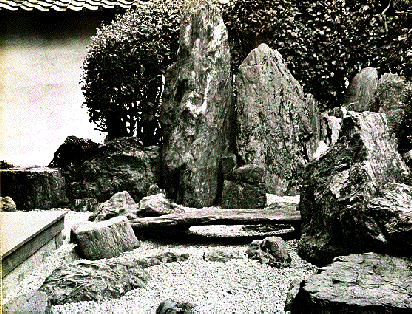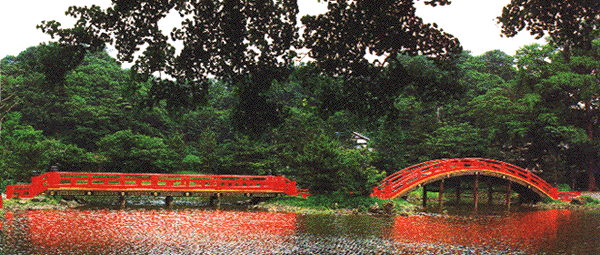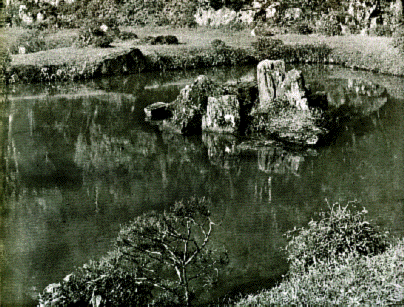
|
The pond, or the ike,
is a fundamental element in Japanese gardens. As a body of water, it
represents the sea, lake, pond or river in nature. This is why they are
not geometrical in appearance; in order to preserve the natural shapes,
man- made ponds are asymmetrical. The bank of the pond is usually
bordered
by stones, as you can see in the image above.
|
